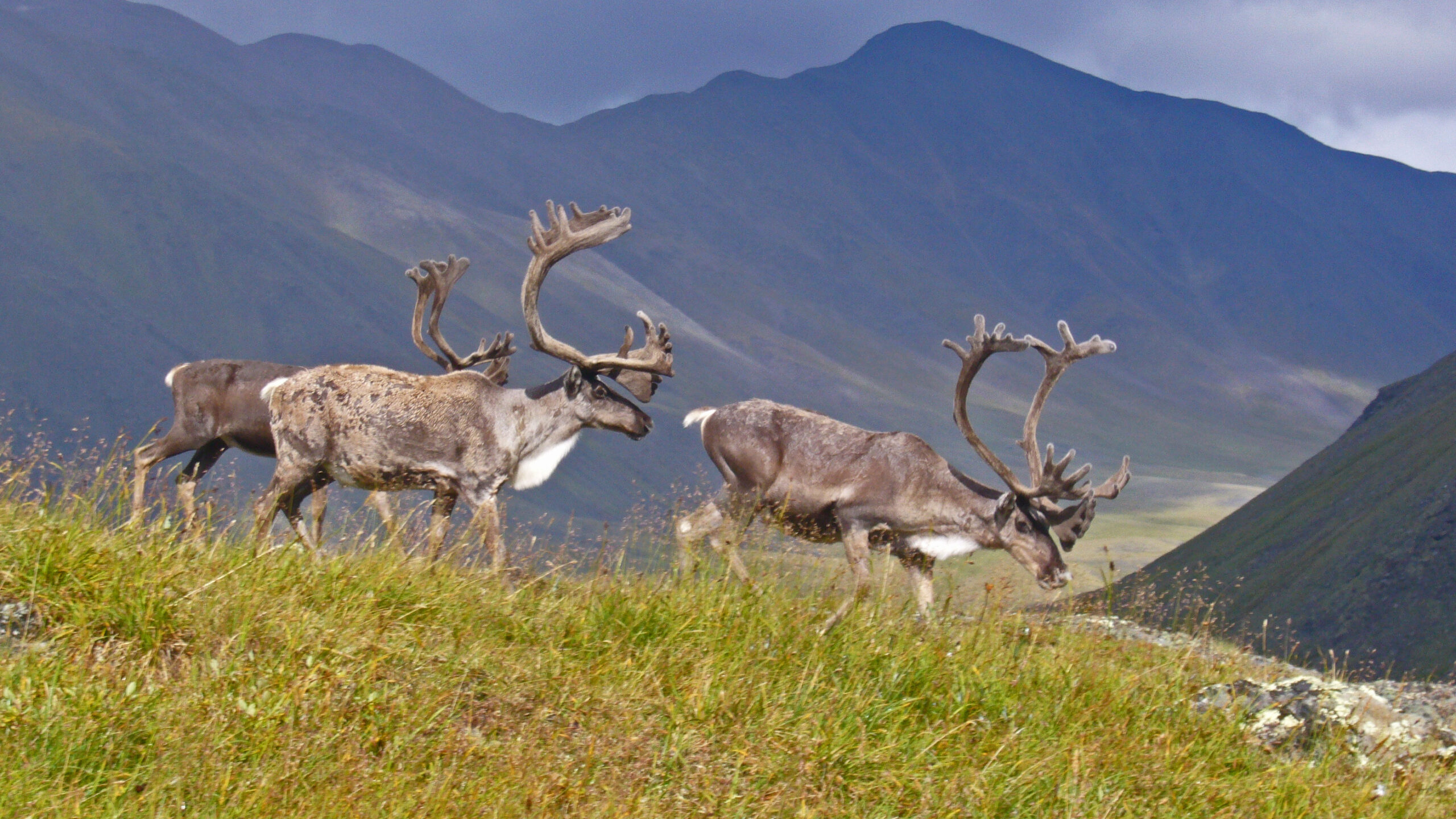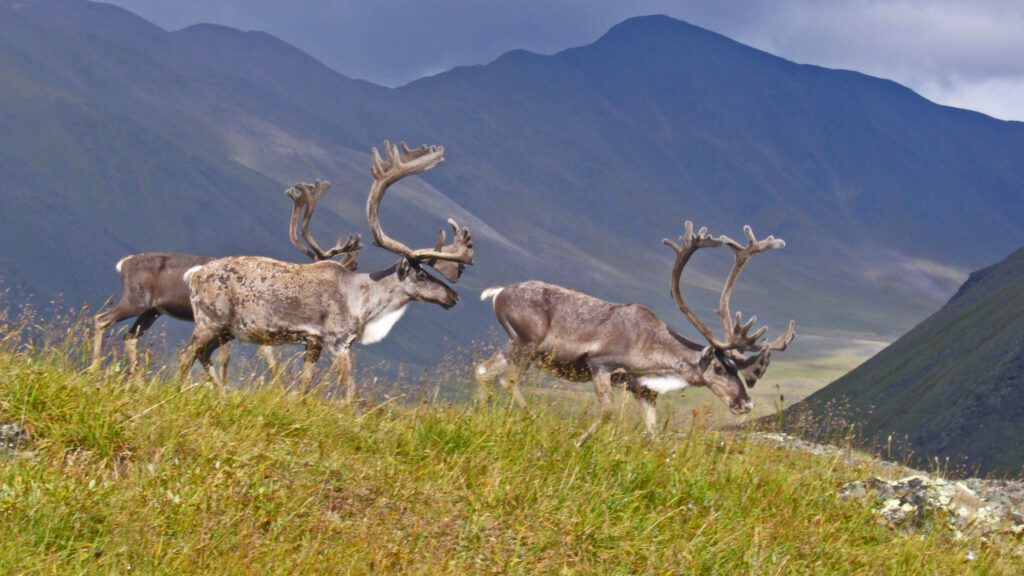
The Road to Ambler: An Endangered Wild
Gates of the Arctic National Park and Preserve, the United States’ premier wilderness park, stretches across the Arctic Divide and the Brooks Range—America’s northernmost chain of mountains. Second only to Wrangell-St. Elias National Park in size, Gates of the Arctic is home to six Wild and Scenic Rivers. It provides exceptional habitat for grizzly bears, wolves, Dall sheep, moose, wolverines, and three different caribou herds. Gates of the Arctic and the surrounding area are Alaska at its wildest. And it’s facing a big threat.

The Western Arctic Caribou Herb on its annual migration through Gates of the Arctic National Park and Preserve. Photo courtesy of Lisa Oakley
The Ambler Mining District, located in the Kobuk River Valley in the Northwest Arctic and southwest of Gates of the Arctic, contains several major mineral deposits currently being explored for zinc, copper, gold, and other heavy metals. A significant portion of the rock formations are part of a sulfide deposit. That means that, when the rock is exposed to air and water, the rocks are highly likely to form acid mine drainage, which can cause serious contamination problems for hundreds, if not thousands, of years. Many of the claims in the Ambler District also drain into the Kobuk River, which is home to key subsistence species, such as the sheefish, and is the cultural and subsistence lifeblood of communities in the region.
During his time in office, Alaska Governor Sean Parnell has made the development of “roads to resources” one of the State’s priorities. And a road to the Ambler Mining District is at the top of the list. This state-subsidized industrial access road would be about 220 miles, stretching from the mining district northeast of Ambler east to the Dalton Highway. The road is estimated to cost between $430 and $990 million, with annual maintenance costs of approximately $8.5 million.
The Ambler Road

The pot of gold at the end of this rainbow is Wilderness in Gates of the Arctic. Photo courtesy of Lisa Oakley
The proposed route would cross 161 rivers and streams, including two Wild and Scenic Rivers, the Kobuk and Alatna Rivers, and would run through or near numerous communities. The road would cross Gates of the Arctic National Preserve and could come within mere miles of a designated Wilderness area. The road would also bisect and disrupt the migratory route of the Western Arctic Caribou Herd—Alaska’s largest caribou herd and a vital subsistence resource for over 40 Native villages in the Western Arctic.
The Alaska Industrial Development and Export Authority (AIDEA), the agency tasked with overseeing development of the road, is poised to file an application in the coming months for a right-of-way to cross Gates of the Arctic National Preserve. Trustees for Alaska is working with a broad coalition of individuals, tribes, and local and community groups to protect this area from this short-sighted development project.
You can help us defend Gates of the Arctic! DONATE TODAY to support Trustees for Alaska’s work.
TL;DR The Ambler Road would cross 161 rivers and streams, would run through or near numerous communities and would cross Gates of the Arctic National Preserve coming within mere miles of a designated Wilderness area.
More about the Ambler Road Project: Ambler Road Project To Ruin Grinds On.


